V&A 1838 Wallcovering



The V&A
The Victoria and Albert Museum, London, (V&A) is the world’s leading museum of art, design and performance with collections unrivalled in their scope and diversity, spanning 5000 years of human creativity. It was established in 1852 to make works of art available to all and to inspire British designers and manufacturers. Today, its purpose is to champion creative industry, inspire the next generation, and spark everyone’s imagination.
1838 Wallcoverings
At the core of 1838 Wallcoverings is the celebration of design and craftsmanship. A family-owned business, it is led by brother and sister team James and Abigail Watson, whose family has over 4 generations of wallpaper printing experience. All 1838 luxury wallpapers are printed at the family factory in Lancashire, where they are masters of wallpaper printing techniques; from the heritage technique of surface printing for a beautiful hand-painted effect, to the latest digitally printed looks. 1838 references the deep roots of wallpaper innovation, for this was the year the first wallpaper machine was pioneered in Darwen, Lancashire, just a few miles away from the current factory.
The Decorative Papers Collection
V&A Decorative Papers by 1838 Wallcoverings is a rich collection of nine wallpaper patterns in over 30 colourways, encapsulating design excellence and craftsmanship. Taking design inspiration from the V&A’s vast archive, combined with 1838 Wallcoverings’ incredible skill and passion, the result is an enchanting collection of reimagined designs that illustrate the decorative charm and continued relevance of the past for the home interiors of today.
Eco-friendly wallcoverings
Sustainability and environmental responsibility are at the heart of 1838 Wallcoverings. The designs in this collection are printed on a new, high quality, eco non woven substrate, 79% of which is made up of natural, renewable fibres. 59% are cellulose (wood pulp) fibres from FSC® certified forests (C119803) and other controlled sources and 20% are PLA (plant derived thermoplastic) fibres from the naturally occurring sugars in sugar beet and corn. There are no oil-based polyester fibres used and the remaining 21% is a made up of a water-based latex binder. All the printing inks are water based, non-toxic and free from VOCs (Volatile Organic Compounds)
All archive images © Victoria and Albert Museum, London
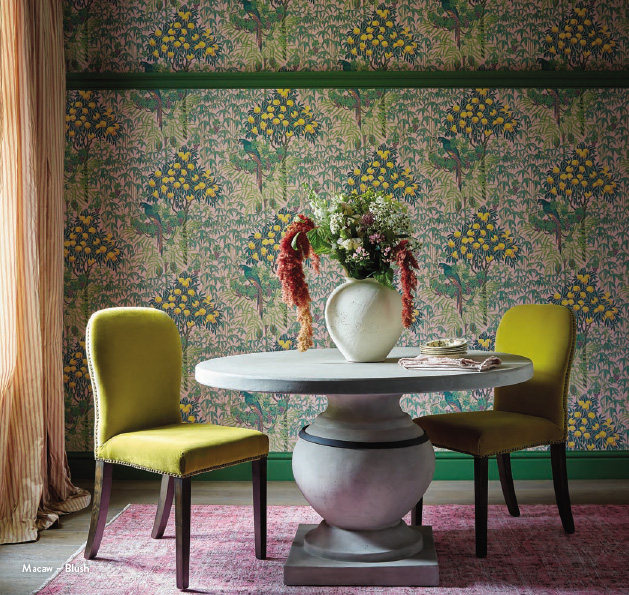
Macaw
Archive inspiration: Macaw wallpaper, Walter Crane (1845–1915) for Jeffrey & Co., London, 1908
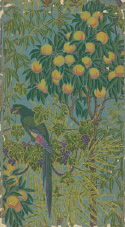 Macaw, designed by Walter Crane for Jeffrey & Co., was originally created as a display piece for the 1908 Franco-British Exhibition in London, where it was awarded a Grand Prix. Generally considered the most influential children’s book illustrator of his generation, Crane also created many memorable designs for wallpaper. Apprenticed as a wood-engraver, Crane had ample opportunity for closely studying the work of contemporary artists such as painters Dante Gabriel Rossetti and illustrator Sir John Tenniel, and his own drawings demonstrate a fine eye for stylised natural detail. Heavily influenced by William Morris, Crane was a committed Socialist and believed passionately in the transformative power of bringing people from every social class into everyday contact with art.
Macaw, designed by Walter Crane for Jeffrey & Co., was originally created as a display piece for the 1908 Franco-British Exhibition in London, where it was awarded a Grand Prix. Generally considered the most influential children’s book illustrator of his generation, Crane also created many memorable designs for wallpaper. Apprenticed as a wood-engraver, Crane had ample opportunity for closely studying the work of contemporary artists such as painters Dante Gabriel Rossetti and illustrator Sir John Tenniel, and his own drawings demonstrate a fine eye for stylised natural detail. Heavily influenced by William Morris, Crane was a committed Socialist and believed passionately in the transformative power of bringing people from every social class into everyday contact with art.
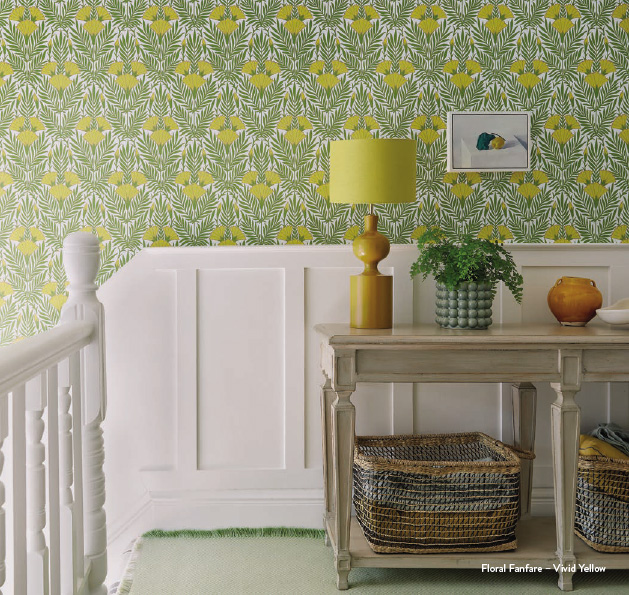
Floral Fanfare
Archive inspiration: Wallpaper design, George Charles Haité (1855–1924), England, 1880–1900
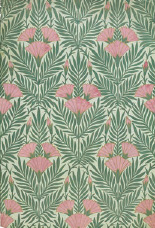
Arts and Crafts practitioners, like George Charles Haité, advocated design that stylised nature, reducing flowers and foliage to a series of formal, symmetrical shapes. A highly talented artist and illustrator, Haité began designing wallpaper in the 1870s and produced designs for various companies including Jeffrey & Co., Essex & Co., William Woollams and Arthur Sanderson & Sons. An elegant pattern drawn from a 19th century design for a wallpaper, composed of fan shaped floral motifs within an arrangement of delicate foliage, the style of Haité’s work crosses the Arts and Crafts and Art Nouveau Movements. The decorative effect is also reminiscent of the glamorous Art Deco style. Perfect in its simplicity, Haité’s artistry is further amplified with strong fresh colours to bring a touch of modernity to the enduring design.
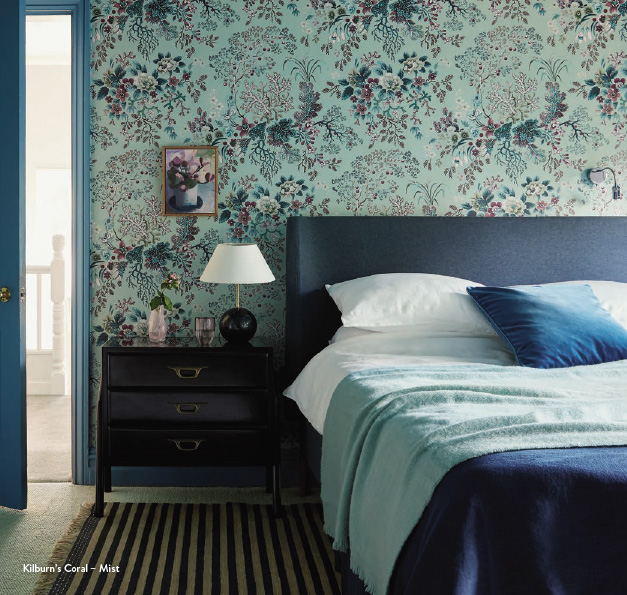
Kilburn’s Coral
Archive inspiration: Design for a printed cotton, William Kilburn (1745–1818), London, 1788–92
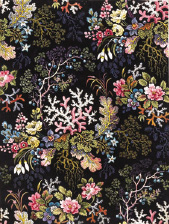
The V&A has in its collection a unique album of 223 exquisite watercolour textile designs by William Kilburn. Born in Ireland, he moved to London and worked as a botanical illustrator before establishing himself in the textile industry and ultimately managing his own calico printing factory at Wallington in Surrey. Admired and imitated by his fellow designers, Kilburn created fantastic and pleasing patterns that never failed in quality and originality. All Kilburn’s designs use floral motifs, accessorised with leaves, shells, ribbons or architectural elements, which demonstrate his great skill in pattern making, disguising the repeat in both complex and simple designs. Here the flowers, plants, seaweed and coral forms are superbly realised and identifiable species are mixed with the exotic to wonderful effect.
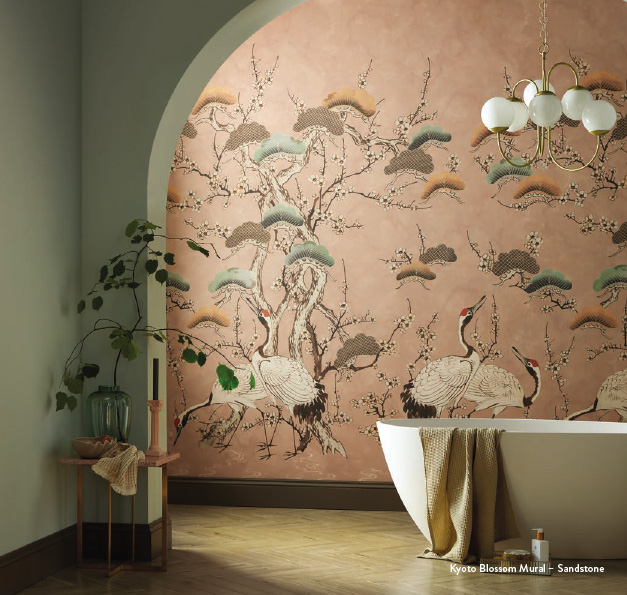
Kyoto Blossom Mural
Archive inspiration: Embroidered kimono, Kyoto, about 1860–1900
 The V&A holds one of the world’s most comprehensive collections of Japanese art, including ceramics, woodwork, prints, paintings, sculpture, textiles and dress. The design of this kimono illustrates the close connection between painting and textile arts that exists in Japan. The surface of the garment acts as a kind of hanging scroll for the creation of a handpainted and resist-dyed image of elegant cranes under plum blossoms and pines. The crane is a symbolic bird in Japan where it is considered to bring happiness, good luck and longevity. One of the more complex designs in the collection, the striking, yet harmonious scene has been adapted to create a large scale wall mural, reflecting perfectly the beauty of these majestical birds with rippling water beneath and a soft, cloud-like texture to give more depth and movement.
The V&A holds one of the world’s most comprehensive collections of Japanese art, including ceramics, woodwork, prints, paintings, sculpture, textiles and dress. The design of this kimono illustrates the close connection between painting and textile arts that exists in Japan. The surface of the garment acts as a kind of hanging scroll for the creation of a handpainted and resist-dyed image of elegant cranes under plum blossoms and pines. The crane is a symbolic bird in Japan where it is considered to bring happiness, good luck and longevity. One of the more complex designs in the collection, the striking, yet harmonious scene has been adapted to create a large scale wall mural, reflecting perfectly the beauty of these majestical birds with rippling water beneath and a soft, cloud-like texture to give more depth and movement.
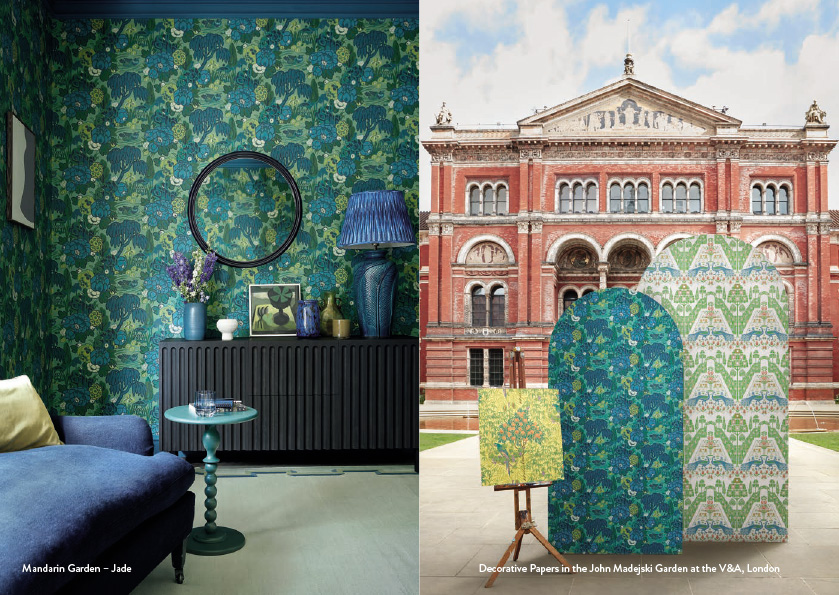
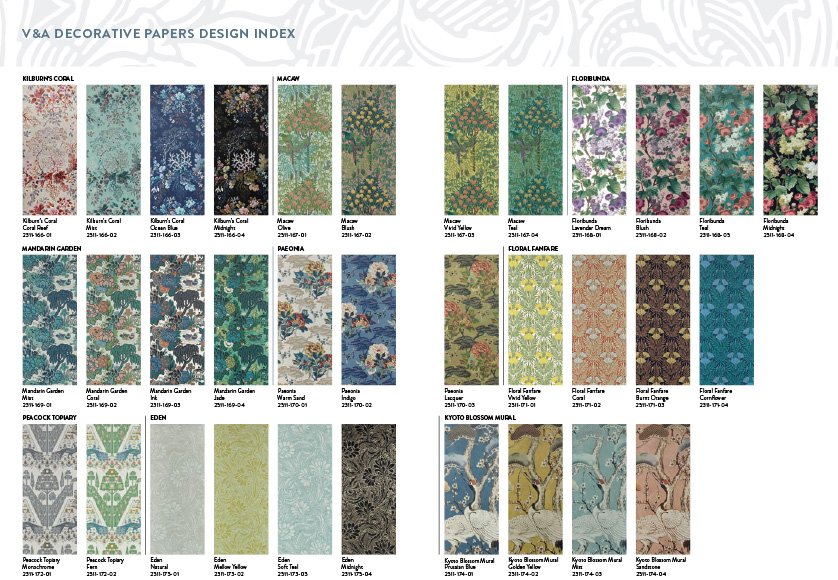
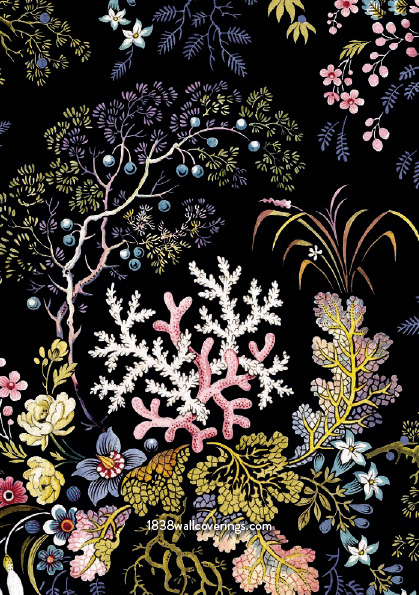


 English
English  ελληνικά
ελληνικά
0 comment(s)